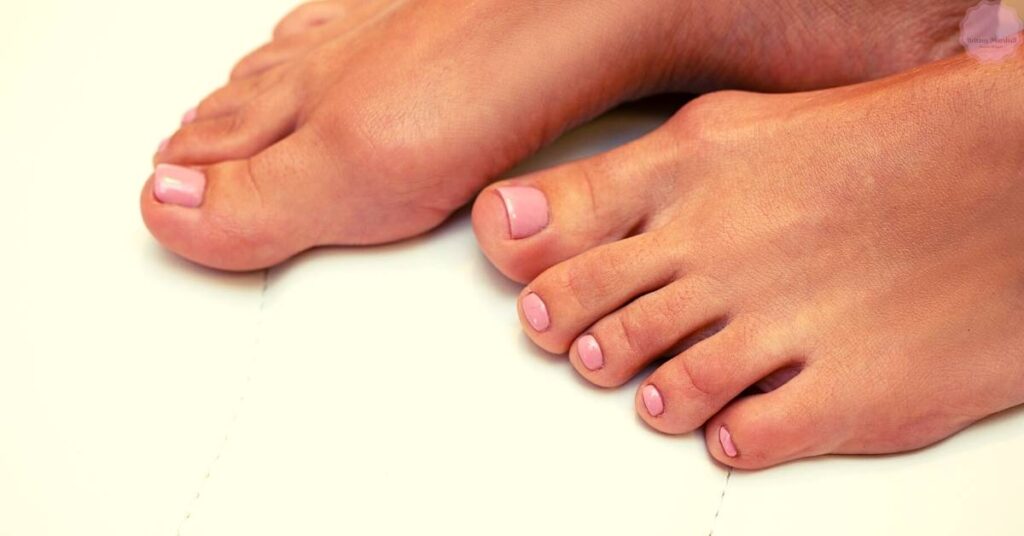How can acrylic nails be done without the use of acrylic liquid? This can be an excellent option for those who want to avoid the harsh chemicals in the liquid or those who are just starting out with acrylic nails and don’t want to invest in the liquid. You will need some acrylic powder, a buffing block, and a clear top coat-and follow these simple steps to create beautiful and long-lasting acrylic nails!
Contents of Article
What is Acrylic Liquid Made of?
The acrylic liquid is made of a polymer powder and a monomer liquid. The polymer powder is usually acrylic ester plastic or polymethyl methacrylate, while the monomer liquid is usually ethyl methacrylate. Together, these two substances create a hard, durable plastic that can be used for a variety of purposes-including creating fake nails.
What is Acrylic Nail Liquid Used For?
The acrylic liquid creates fake nails and extends the length of natural nails. It can also be used to develop other nail art designs, such as 3D designs, or to add sparkle and glitter to nails.
How to Do Acrylic Nails Without Acrylic Liquid?
When working with acrylic powder, it’s essential to use the correct proportions of acrylic liquid and powder, or you may end up with a weak or brittle nail. But what if you’re out of acrylic liquid or don’t have time to run to the store?
The first step is to mix your acrylic powder with a carrier fluid. You can use anything from distilled water to 99% alcohol – just make sure it’s something that will help the powder adhere to the nail. Then, apply the mixture to your nails in the same way you would with acrylic liquid. After filing and shaping your nails, cure them under a UV light for two minutes.
If you’re looking for a more durable finish, we recommend using a top coat over your acrylic nails. This will help protect them from chipping and peeling.
7 Acrylic Liquid Substitutes
When it comes to painting, there are a variety of different mediums that can be used. Acrylic paint is one of the most popular types, and it can be used to create a variety of other effects. However, if you’re looking for an alternative to acrylic liquid, there are several substitutes that you can use.
Here are six of them:
1. Watercolor
Watercolor is a great substitute for acrylic liquid, as it has a similar texture and can be used to create similar effects.
2. Gouache
Gouache is another type of water-based paint that can be used as a substitute for acrylic liquid. It has a thicker consistency than watercolor, so it can be used to create more opaque paintings.
3. Tempera
Tempera is an older type of paint made from pigments and egg yolk. It has a very thick consistency and is often used for religious paintings or murals.
4. Enamel
Enamel paint is another thick alternative to an acrylic liquid. It’s made from glass particles and other minerals and dries to a hard, glossy finish.
5. Oil Paint


Oil paint is probably the most popular alternative to an acrylic liquid. It has a very different texture and takes longer to dry than acrylic paint, but the results can be stunning.
6. Markers
If you’re looking for something quick and easy, try using markers as a substitute for acrylic liquid. They come in various colors and textures and are perfect for creating abstract art or sketches.
7. Homemade acrylic liquid
If you have necessary home remedies and 5-10 minutes of free time, you can create your own acrylic liquid at home with our step-by-step guide below.
How to make your own acrylic liquid DIY guide
Creating your own acrylic liquid is a great way to save money and have the creative freedom to make any color or effect you want. This guide will walk you through the steps necessary to make your own acrylic liquid.
What you’ll need:
- A container to mix the ingredients in
- An airtight container to store the finished product in
- 1 cup of water
- 1/2 tsp. Epsom salts
- Three drops of food coloring (optional)
- 1 tsp. vinegar
Instructions:
- In a bowl or container, mix 1 cup of water, 1/2 tsp. Epsom salts, and three drops of food coloring (optional). Stir until the salts are completely dissolved.
- Add 1 tsp. Vinegar and stir again.
- Pour the mixture into an airtight container and store it in a cool, dark place.
That’s it! You’ve now created your acrylic liquid that can be used for various art projects.





